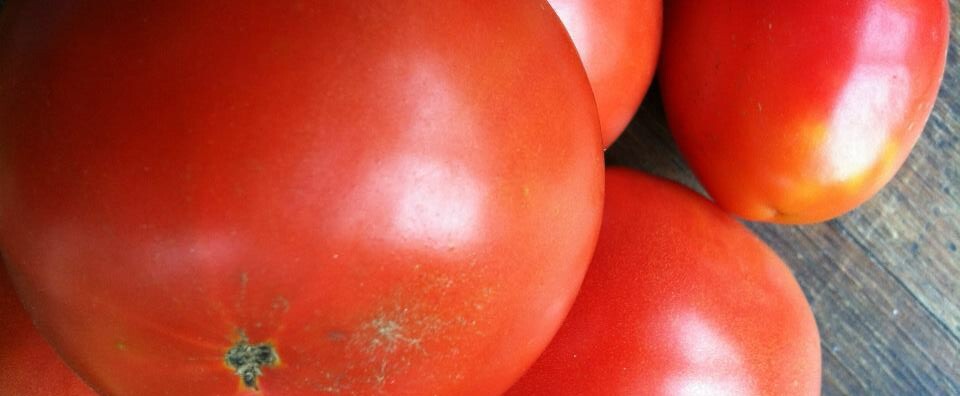This recipe is adapted from The Blue Chair Jam Cookbook by Rachel Saunders (Andrews McMeel Publishing, LLC, 2010). Marmalades are not instant preserves, you have to make them over two days, but you can easily arrange the timing to suit your schedule.
Makes 11 to 12 8-ounce jars, but you can cut this recipe in half.
From the book: “Tomato marmalades are the perfect partners for crackers, cornbread, or sourdough. They have a long history in the United States, where they were traditionally seen as a way to use up extra fruit during summer’s long tomato season. Like tomato jam, they tended to be heavily spiced with cinnamon and cloves. For this lighter version, I have introduced saffron into the mix. The result is magic.”
That said, the saffron is totally optional.
Ingredients:
1 pound seeded lemons, halved crosswise, each half cut lengthwise into quarters, and sliced crosswise medium-thin 1 pound navel or seeded Valencia oranges, halved crosswise, each half cut lengthwise into quarter and sliced crosswise medium-thin 3-1/2 pounds red tomatoes 4 pounds 14 ounces granulated sugar 1/2 cup freshly squeezed lemon juice A large pinch of saffron 1 (1-1/2-inch) piece cinnamon stick
Preparation:
Day 1
First, prepare the lemon and orange slices: Place the slices in a wide stainless-steel kettle and cover amply with cold water. Bring to a boil over high heat, boil for 1 minute, and then drain, discarding the liquid. Return the slices to the kettle and cover with 1 inch cold water. Bring to a boil over high heat, then decrease the heat to medium and cook, covered, at a lively simmer for 30 to 40 minutes, or until the fruit is very tender.
While the citrus is cooking, prepare the tomatoes: Bring a medium kettle of water to a boil, then carefully drop the tomatoes into the water to loosen their skins. Leave the tomatoes immersed for 1 minute, then drain them in a large colander. When they are cool enough to handle, peel them over a large bowl, discarding the skins. Using your hands, gently tear the tomatoes into medium pieces.
When both the citrus slices and tomatoes are ready, put them together into a nonreactive heatproof storage container with the sugar, lemon juice, and saffron, stirring well to combine. Cover tightly and refrigerate overnight.
Place a saucer with five metal teaspoons in a flat place in your freezer for testing the marmalade later.
Remove the tomato mixture from the refrigerator and transfer it to an 11- or 12-quart kettle. Add the cinnamon stick and stir well to incorporate any undissolved sugar.
Bring the mixture to a boil over high heat. Cook at a rapid boil until the setting point is reached; this will take a minimum of 30 minutes, but may take longer depending on your individual stove and pan. Initially, the mixture will bubble gently for several minutes; then, as more moisture cooks out if it and its sugar concentration increases, it will begin to foam. Do not stir it at all during the initial bubbling; then, once it starts to foam, stir it gently every few minutes with a heatproof rubber spatula, As it gets close to being done, stir it slowly every minute or two to prevent burning, decreasing the heat a tiny bit if necessary. The marmalade is ready for testing when it turns slightly shiny and its bubbles become very small.
To test the marmalade for doneness, remove it from the heat and carefully transfer a small representative half-spoonful to one of your frozen spoons. It should look glossy, with tiny bubbles throughout. Replace the spoon in the freezer for 3 to 4 minutes, then remove and carefully feel the underside of the spoon. It should be neither warm nor cold; if still warm, return it to the freezer for a moment. Tilt the spoon vertically to see whether the marmalade runs; if it does not run, and if its top layer has thickened to a jelly consistency, it is done. If it runs, cook it for another few minutes, stirring, and test again as needed.
When the marmalade has finished cooking, turn off the heat but do not stir. Using a stainless-steel spoon, skim off any surface foam and discard. Remove the cinnamon stick. Pour the marmalade into sterilized jars and process according to the manufacturer’s instructions.

